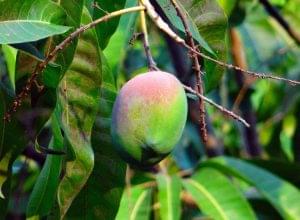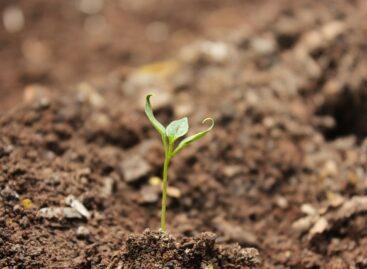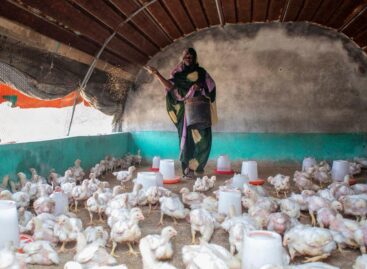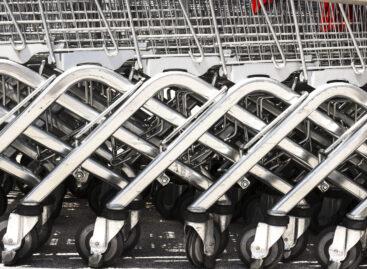The vicious circle of food waste and climate change can be broken with simple solutions
Food. We produce it, harvest it, process it, pack it, transport it, distribute it, give it away, make it, and then throw it away.

(Photo: Pixabay)
Every year, 14% of the food raw materials produced are destroyed before they even reach the store shelves. Another 17% is thrown away by retailers and consumers.
Food loss and waste is responsible for 10% of global greenhouse gas emissions and thus contributes to the climate crisis. In some countries, the food supply chain is already close to taking the lead from the agriculture and land use sector, which is currently the biggest emitter, exacerbating unpredictable weather and climate events such as drought and flooding. This affects the yield and quality of crops, increases food loss, and undermines food security and proper nutrition.
But while the world produces enough food to feed the entire global population, nearly 830 million people still go hungry. Disruption of supply and demand can be traced back to many causes and systemic problems in the agri-food supply chain – which includes the entire journey of food from producer to consumer. That is why eliminating such inefficiencies and breaking the vicious circle of food waste and climate change is of primary importance, especially in light of such high food prices.
Simple solutions
Many projects of the Food and Agriculture Organization of the United Nations (FAO) are aimed at reducing food loss and waste and making the agri-food system more efficient. Many of these projects, which show promising results, aim to improve fruit and vegetable production in South Asia, where mango is one of the most important crops. Ripe mangoes can be used in many ways. It can be eaten fresh or used in cakes, ice cream, sorbet or pastries. Puree is rich in dietary fiber, vitamins C and A, as well as carotenoids and antioxidants. However, like many other fruits, mangoes spoil quickly due to their high moisture content. If not harvested at the right ripeness level and then handled improperly during transportation, mangoes deteriorate rapidly in terms of quality and quantity, generating losses for growers and traders. Improper handling also shortens its warranty, limiting the possibilities of sellers and thus causing economic damage. However, South Asian producers often lacked this knowledge, as a result of which more than half of the harvested crop was often ruined. The biggest causes of post-harvest damage are plant pathogens and pests, incorrect harvesting methods, carelessness, insufficient packaging or transport conditions. However, after FAO trained farmers on better post-harvest practices and encouraged them to use reusable plastic bins for transport instead of single-use mesh bags, the situation began to improve dramatically.
Impressive results
Recently, mango growers in Bangladesh have also benefited from FAO’s best practices and low-cost, sustainable solutions to improve the quality and shelf life of the fruit. Practice shows that although these are not very expensive steps, their effect is all the more significant. The use of plastic bins for packaging, for example, reduced losses during transport to a minimum, while the shelf life of mangoes treated with hot water against post-harvest diseases increased significantly. Tools and techniques used during harvest, such as better fruit pickers or cutting the stem using scissors and gloves instead of tearing it off, have reduced mechanical damage to the fruit and have had many other aesthetic benefits. Overall, improved post-harvest methods and hot water treatment increased the quality and shelf life of mangoes sold, in addition to reducing the amount of discarded fruit by 70-80%. The reduction of loss and the increase of warranty together brought substantial financial gains to both producers and traders. “This incredible improvement shows that small changes to post-harvest methods and the introduction of certain cost-effective tools can have a big impact on the quality and shelf life of fresh produce, reducing food loss and waste,” said Rosa Rolle, FAO’s Senior Business Development Specialist. FAO therefore presents these methods to many partners worldwide. So far, more than 5,000 small farmers in Asia have participated in trainings to improve the cultivation and sale of fresh fruits and vegetables.
FAO
Related news
Too many gifts, too much food: our holiday excesses are putting a serious strain on the environment
🎧 Hallgasd a cikket: Lejátszás Szünet Folytatás Leállítás Nyelv: Auto…
Read more >AM: One of Hungary’s greatest strategic assets is good-quality fertile soil
🎧 Hallgasd a cikket: Lejátszás Szünet Folytatás Leállítás Nyelv: Auto…
Read more >FAO: International food prices have been declining since September
🎧 Hallgasd a cikket: Lejátszás Szünet Folytatás Leállítás Nyelv: Auto…
Read more >Related news
Christmas shock in commerce: for the first time, we can pay with bank cards in fewer places
🎧 Hallgasd a cikket: Lejátszás Szünet Folytatás Leállítás Nyelv: Auto…
Read more >Hungarian Confectionery Manufacturers Association: trends in 2025 and prospects for 2026
🎧 Hallgasd a cikket: Lejátszás Szünet Folytatás Leállítás Nyelv: Auto…
Read more >Most grocery chains will be open until noon on December 24th
🎧 Hallgasd a cikket: Lejátszás Szünet Folytatás Leállítás Nyelv: Auto…
Read more >






